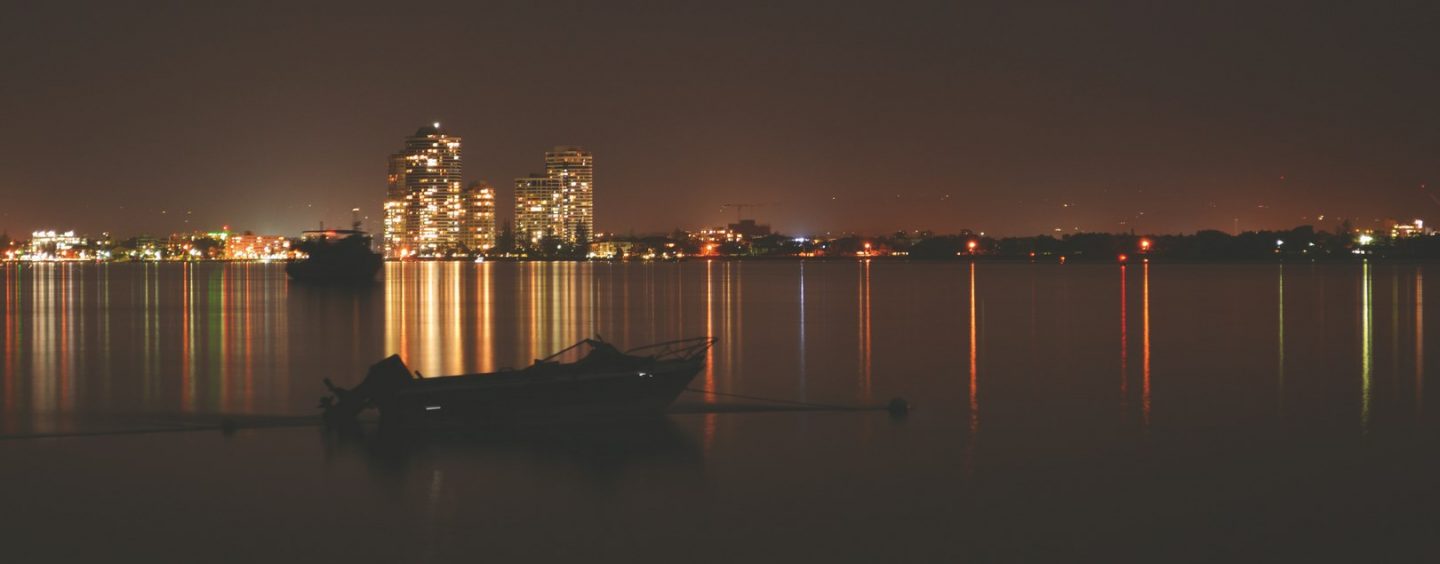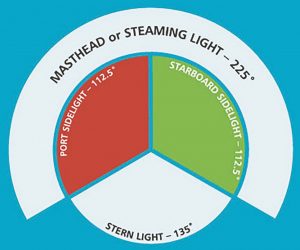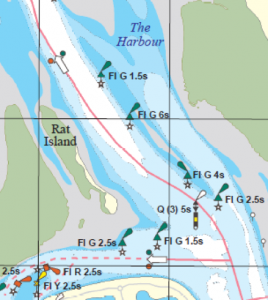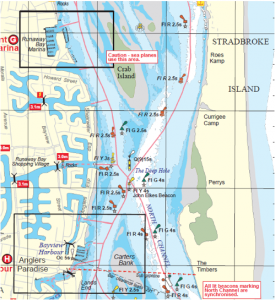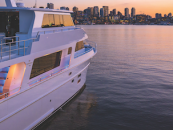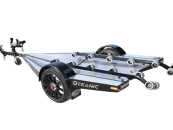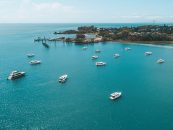TIPS FOR NIGHT NAVIGATION
Article by Nic Welch
I have fond memories as a young teenager when my father often let me drive us home from Tipplers at night in our 17-foot half-cabin. While the first time seemed a little daunting to me, my father taught me some valuable lessons about driving at night that I still use today.
Driving a boat at night is now one of my favourite boating activities. However, it does not come without danger. If you are new to boating and are considering driving your boat for the first time at night, hopefully these tips will make your experience a safer one.
NAVIGATION LIGHTS
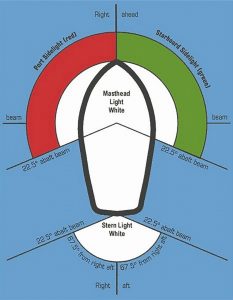 It is compulsory for powered vessels to display sidelights, and either an all round white light or a stern and masthead light at all times while the vessel is underway between sunset and sunrise, and also in restricted visibility (such as rain or fog). A vessel is also deemed underway when drifting. An all-round white light should be displayed when the vessel is at anchor.
It is compulsory for powered vessels to display sidelights, and either an all round white light or a stern and masthead light at all times while the vessel is underway between sunset and sunrise, and also in restricted visibility (such as rain or fog). A vessel is also deemed underway when drifting. An all-round white light should be displayed when the vessel is at anchor.
It is a good idea to test your navigation lights regularly to ensure they are in working order for when you need them. You should also carry spare fuses, spare bulbs, or a set of emergency navigation lights.
Ensure your navigation lights are properly fitted. Navigation lights indicate what direction a vessel is travelling. If you have improperly fitted navigation lights, your vessel’s direction cannot be accurately determined, which may lead to a collision.
Carry a good quality torch on board your vessel, and have it within reach of the driving position at all times. An excellent choice for a torch is the original-sized Dolphin torch. It is durable, waterproof, and offers a strong light beam that is particularly handy for illuminating reflectors on unlit navigation markers. The colour of the reflectors on unlit navigation marks mimics the colour of the light which would be present on the mark if it were lit. Make sure the battery in your torch is new or fully charged, and test the torch prior to departure. Carry spare bulbs, spare torch batteries, or even a complete spare torch as a backup.
If you see another vessel approaching, do not shine your torch directly at the other vessel. This will blind the other driver and ruin their night vision. I often see vessels travelling at night with spotlights mounted on the bow, with the spotlights switched on at all times. While this may seem like a good idea, it is actually dangerous for all other vessels on the water due to the blinding light. With no torch or spotlight on, your eyes will adjust to the darkness and you will see further into the distance than with a light on. Only use your torch when necessary. If your vessel type permits, holding your torch over the side of the boat when switched on will reduce glare, rather than switching on the torch inside the cabin.
Having daytime local knowledge of the area in which you wish to operate at night is imperative. Making a beeline between navigation markers can sometimes lead your vessel straight onto a sandbank or worse. It is essential that you already know how the channel runs before any attempt at night. It is important to have memorised the number and position of markers in the area, and have identified any unlit markers. It is also worth remembering that lights on lit navigation markers sometimes fail. So, if you do not have local knowledge of the position of every marker in the area, I strongly suggest studying a navigation chart prior to your trip—and always take a chart with you. If your vessel has a GPS chart plotter, plot a route of your intended course before you depart.
TRAVEL AT A SAFE SPEED AND KEEP A PROPER LOOKOUT
Unlike driving during daylight hours, it is impossible to see sandbanks, waves, and other obstructions such as crabpots, until they reflect off your navigation lights, especially on dark nights around the new moon, and prior to moonrise on other nights. Travel at a slower speed at night than you would normally travel during daylight hours. If you are unsure about a situation or your exact whereabouts, slow right down or stop. Most importantly, if your boat travels over another boat’s wake, and you cannot identify the vessel the wake came from, I cannot stress enough that you should come to a complete stop immediately. It is very likely that the other vessel may not be displaying any navigation lights and could be just metres from your own vessel.
Judging distances at night is difficult. If the compass bearing of a vessel in the distance does not change over time, then a risk of collision exists and you must take action to avoid the collision.
So you are approaching a cluster of markers and you know that the next three markers you should follow are green (starboard lateral marks). But which green marker is the next one? The answer lies in the flash rhythm of the marks. The correct mark can only be determined by looking at a chart and finding what the flash rhythm of the next mark is.
Lit markers on navigation charts, such as Maritime Safety Queensland’s Beacon to Beacon Guides, indicate the flash rhythm of markers using abbreviat ions such as Fl G 4s (meaning F l a s h i n g Green every 4 seconds), and Fl R 2.5s meaning Flashing Red every 2.5 seconds. If there is no colour indicator (where R=red, G=green, Y=yellow, Bu=blue, Or=orange), then the colour of the light is white.
Other abbreviations include Q (quick flash), VQ (very quick flash), L (long flash), VL (very long flash), Iso (Isophase—equal light on and off duration), Oc (Occulting—longer light on than off), F (Fixed— solid light, not flashing), Fl(3) (Group of 3 flashes), and Q(3) (Group of 3 Quick flashes).![]()
Cardinal marks exhibit a white light when fitted. North cardinal marks have continuous quick flashes, east cardinals 3 quick flashes, west cardinals 9 quick flashes, and south cardinals 6 quick flashes followed by one long flash. An east cardinal mark with the notation Q(3) 5s means a group of 3 quick white flashes every 5 seconds. A south cardinal mark with the notation VQ(6) & LFl 10s means a group of 6 very quick white flashes followed by a long flash, every 10 seconds.
Bridge span navigation lights are often a fixed blue light (F Bu), and indicate the navigable channel under the bridge, which may not necessarily be in the centre of the bridge.
Published in print July-September 2021






















